Thanksgiving day in the United States is quickly approaching and I want to share some ideas for a farm-to-table Thanksgiving dinner while you still have time to plan it.
The farm-to-table concept is centered around eating locally-grown and raised food. The food comes directly from a farm, to your table. It’s how our ancestors ate, and is in contrast to the industrialized food system that ends at the grocery store to your table.
Thanksgiving is really an ideal season to create a farm-to-table meal in your home. It honors the historical roots of the holiday season as a time to celebrate the harvest and give thanks for our blessings.
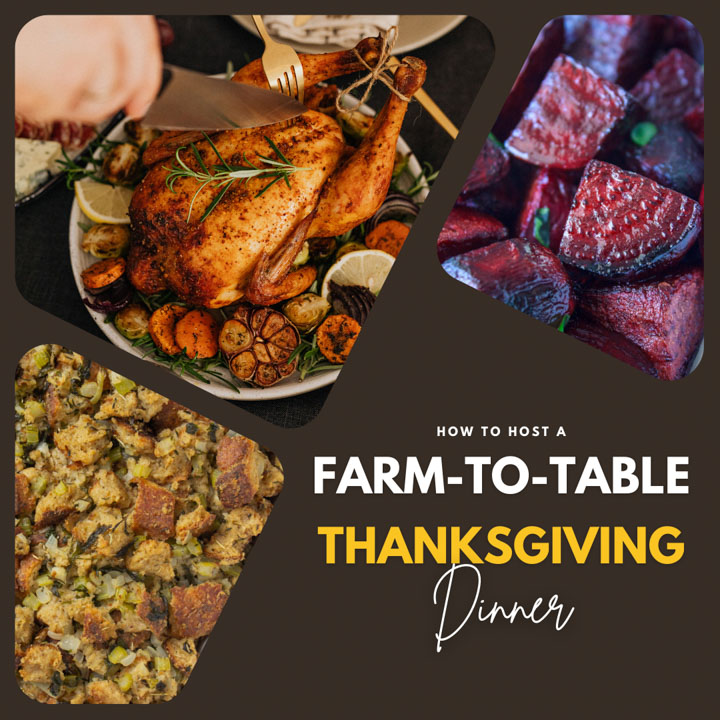
Keep reading and I’ll explain how your family can host a farm-to-table Thanksgiving, and some themed ideas to go with it!
This doesn’t need to be “all or nothing”. If it’s not possible or practical to source your entire meal directly from local farms, that’s OK. Just pick a few things for this year.
In this post:
- How to Host a Farm-to-Table Thanksgiving
- Farm-to-Table Thanksgiving Menu Items
- What Produce is in Season During November
How to Host a Farm-to-Table Thanksgiving Dinner
1. Buy your Thanksgiving produce at a farmers market
There are still lots of locally-grown veggies to be had at farmers markets all across the country.
It’s no fluke that many traditional Thanksgiving dishes are based on those vegetables that are in season right now. Think of dishes such as sweet potato casserole, roasted squash, brussels sprouts, cranberry sauce and pumpkin pie.
To find a farmers market near you, check out the National Farmers Market Directory.
And, before you go to a farmers market, be sure to read up on how to spot fake farmers at the farmers market. Wholesalers and resellers often attend the markets and source their produce from all over the country, and beyond. This defeats the farm-to-table Thanksgiving experience you want to create.
2. Order your Thanksgiving turkey from a small farm
Right now, grocery store freezers are overflowing with frozen turkeys that were raised and slaughtered as part of America’s industrial food system.
What you may not know is there are many small farmers across the country that raise turkeys on their own land and sell them direct to consumers like you and I.
Rather than living their life out in an over-crowded barn (or cage), these turkeys live on pasture and get to forage for insects, grasses and seeds like they would in the wild.
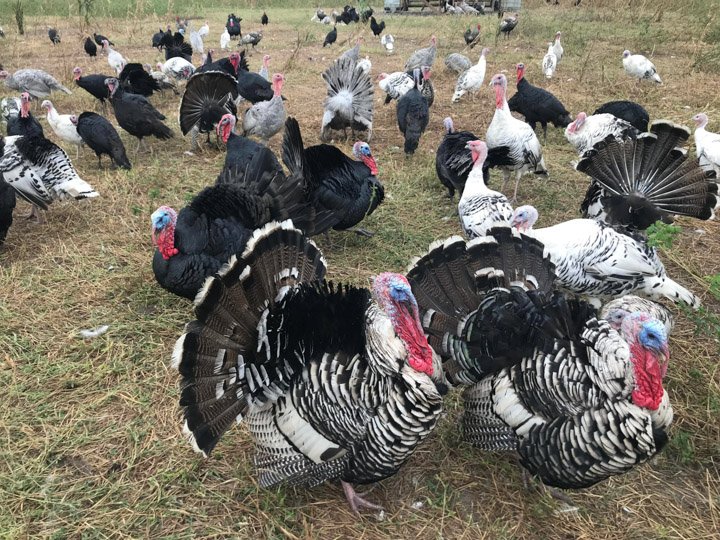
If you’d like to buy a free-range turkey for Thanksgiving, you’ll need to order one in advance. Fortunately there’s still time!
Search on Google Maps or on social media for “pasture raised turkey” or “free-range turkey” to find a farm near you.
If buying a pasture raised turkey from a local farm isn’t feasible or possible, what about buying pasture raised chicken instead?
Provided you’re Ok with forgoing a traditional turkey dinner, pastured chicken costs less per pound than pastured turkey. Here’s my recipe for a slow cooker whole chicken (pasture raised).
3. Eat what’s in season
One of the tenets of farm-to-table dining is eating what’s in season. Truly embracing a farm-to-table meal may require forgoing some of your family’s favorite dishes, in favor of foods that are in season right now.
The best way to discover what’s in season is a visit to your local farmers market to explore what real farms are harvesting right now. To help you plan your shopping list in advance, I also created a list of what’s in season during November.
4. Cook from scratch and avoid processed ingredients
For the most authentic farm-to-table experience, consider omitting pre-packaged and processed ingredients from the Thanksgiving dishes you serve on turkey day.
If farm-to-table is all about eating good food from local farms, including processed ingredients in your recipes takes away from that.
Processed food includes anything that comes in a can, store-bought marshmallows and fried onions, boxes of stuffing, packets of seasoning mix and crackers.
Think about some common Thanksgiving fixings made with processed food and how you could tweak or swap out the recipes to omit pre-packaged ingredients.
For example, rather than green bean casserole made with canned soup, you could sauté fresh green beans with garlic.
Rather than pumpkin pie made with canned pumpkin pie puree, you could make pumpkin pie puree from scratch. I’ve shared a recipe for that menu ideas section below.
5. Share the farm-to-table story with your guests
When I cook farm-to-table meals for friends or family, I enjoy sharing about where the food comes from. In my experience, people are surprised to learn about local options for sourcing food direct from a farm. It makes my day when they are then inspired to start going to their local farmers market.
So be sure to pass along the story of where the ingredients for your dish came from, the farm where it grew and how you discovered it. I can’t think of a better conversation topic around a Thanksgiving table.
6. Host a farm-to-table potluck

Here’s an idea if you plan to host a Thanksgiving potluck and think most of your guests will be up to a twist. This isn’t about turning Thanksgiving into more of a complicated chore than it may already feel to some.
If you’re already asking guests to bring a dish to share, you’re halfway there! How about having a Thanksgiving potluck with a farm-to-table theme. Ask your guests to source the main ingredient in their dish direct from a farm. And that farm can be found at a farmers market.
For lots of families, going to a farmers market the weekend before Thanksgiving will be a really fun and connected activity.
Provide index cards, or pretty labels, so all guests can write the name of the farm and location where the main ingredient was sourced. Then place them beside each dish when you set out the Thanksgiving buffet.
This also makes a great conversation topic over dinner. 🙂
7. Share a gratitude activity
With Thanksgiving being a time for connecting and gratitude, I have a perfect activity for your family to do around the dinner table this year.
Simply print out these “I’m thankful for” free printables, and put one (or more) at each place setting. Family and friends write or draw things they are thankful for on each card. After dinner the cards can be read aloud, or hung on a gratitude tree.
Farm-to-Table Thanksgiving Menu Items
Creating a Farm-to-Table Thanksgiving menu doesn’t necessarily require special farm to table recipes.
A lot of the holiday favorites you’re used to could probably be sourced from a local farm. Not coincidentally, many Thanksgiving classics are based on those foods that are in season this time of year.
What follows is a collection of simple recipes made with ingredients that are pretty easy to find at farmers markets around Thanksgiving (depending on what state you live in).
By keeping recipes simple, it’s much easier to go farm-to-table for your full Thanksgiving dinner.
Thanksgiving Side Dishes
1. 3-Ingredient Butternut Squash Soup

Whip up a large pot of this 3-ingredient butternut squash soup the day before Thanksgiving. It reheats quickly on the stovetop right before you’re ready to serve it. One less Thanksgiving side dish you’ll need to make on Thanksgiving day.
2. Rustic Honey Roasted Carrots

These honey roasted carrots look beautiful on a large platter for a family-style feast. And they taste even better. Your guests will be so impressed!
3. Roasted Acorn Squash

A classic thanksgiving feast wouldn’t be complete without roasted squash. And acorn squash is one of the easiest winter squashes to find at fall farmers markets. This easy recipe saves you the time of peeling the squash, just slice, bake and serve the cute little wedges. It’s delicious!
4. Roasted Butternut Squash

Butternut squash is another vegetable that’s easy to find at fall farmers market. You can even buy it weeks ahead of time and keep it in a dark pantry until Thanksgiving day.
This roasted butternut squash recipe works well for making mashed squash ahead of time and reheating it on Thanksgiving day.
We also have another roasted butternut squash recipe that reheats well if you prefer chopped squash rather than mashed.
5. Sautéed Green Beans with Garlic
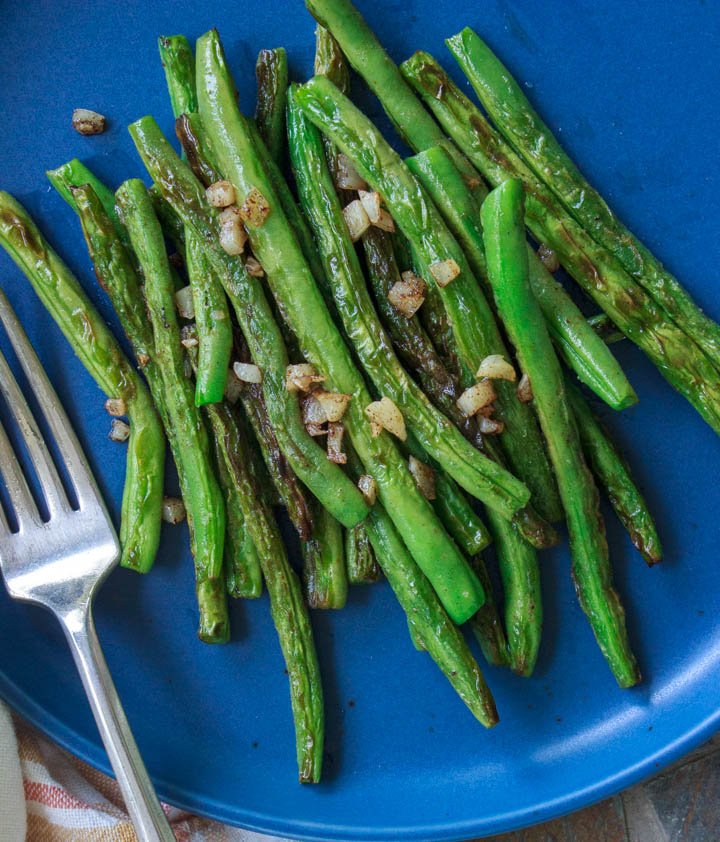
Forget the green bean casserole with canned soup. For a farm-to-table alternative, buy some green beans from the farmers market and make sautéed green beans. Sautéed green beans are so much tastier than boiled green beans too!
6. Simple Roasted Beets
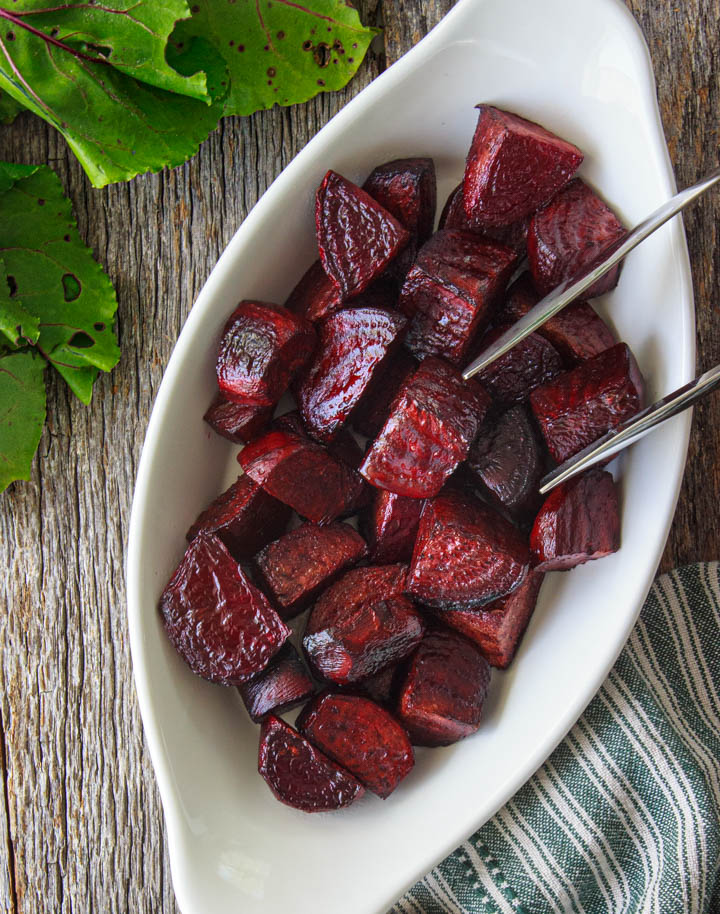
These roasted beets create a beautiful burst of red on your Thanksgiving table. They are also healthy and nutritious and made with only two ingredients – beets and olive oil!
7. Sourdough Stuffing Recipe
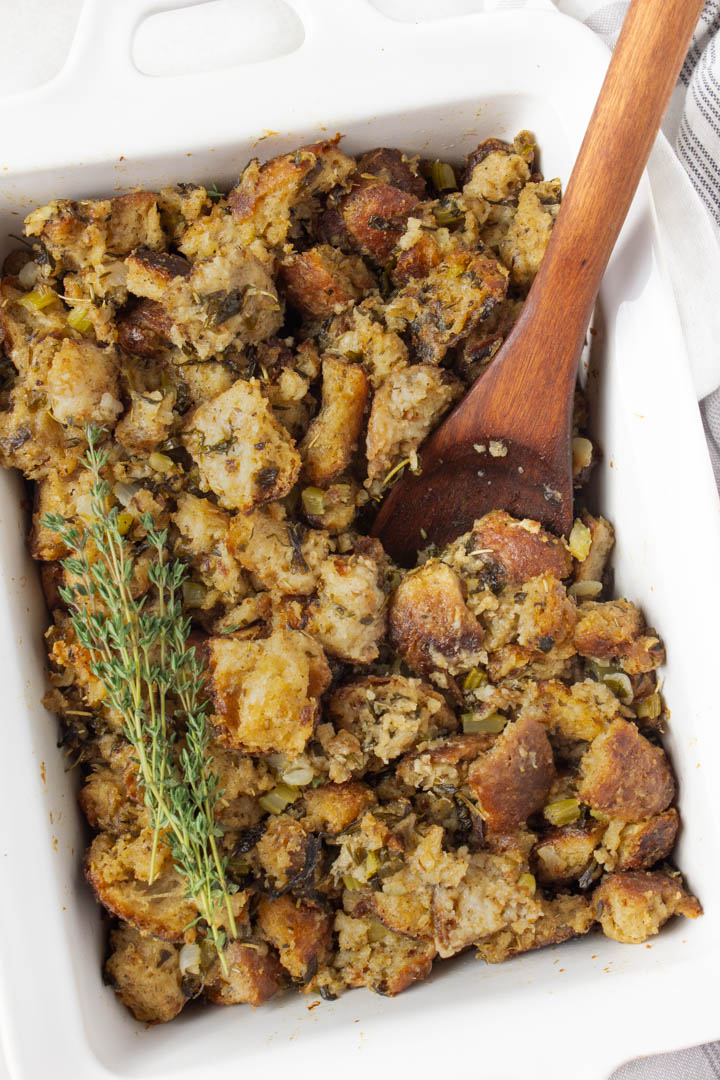
Last year my friend Kevin brought gluten-free stuffing to Friendsgiving. His recipe was so freakin’ delicious that I asked for it, and made some adjustments to create this sourdough stuffing recipe.
Farm-to-Table Thanksgiving Main Course
1. How to Cook a Pasture Raised Roast Turkey

A classic Thanksgiving feast always includes a roasted turkey. And the folks over at White Oak Pastures will walk you through how to roast a pasture raised turkey.
2. Slow Cooker Pasture Raised Chicken

Pastured chicken costs less per pound than pastured turkey. So if you don’t mind having a less traditional bird on the holiday table this could be a more economical option.
Whole chickens (3-5 pounds) are also much smaller than whole turkeys (8 pounds at minimum). This makes chicken a great Thanksgiving entree for just a couple people.
The other great thing about this recipe is the chicken is roasted in the slow cooker. This frees up your oven for other things like roasted squash!
2. Whole Oven Roasted Pasture Raised Chicken
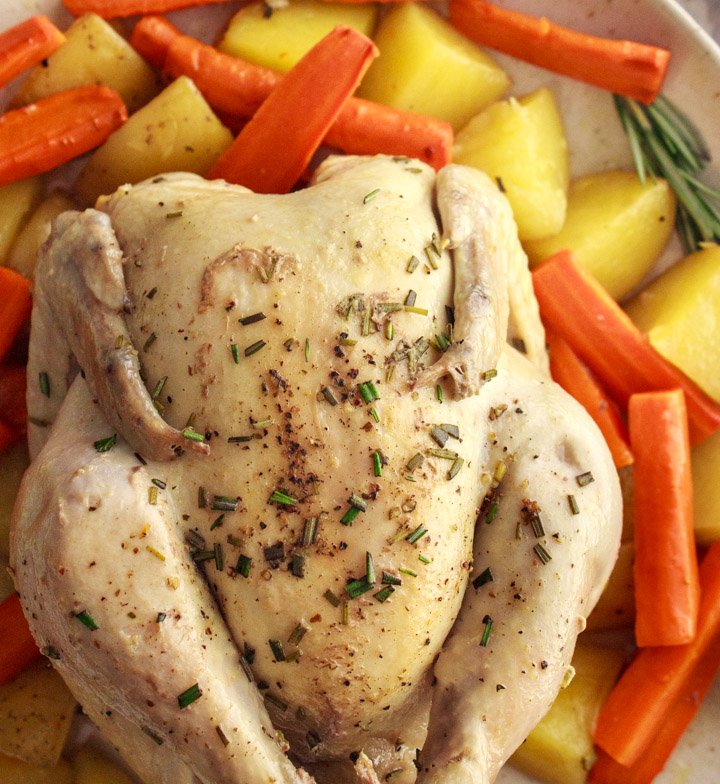
If you’d rather cook your Thanksgiving chicken in the oven than a slow cooker, I’ve got you. This oven-roasted whole chicken is just as delicious as the slow cooker whole chicken recipe above.
Thanksgiving Condiments
1. Homemade Organic Cranberry Sauce
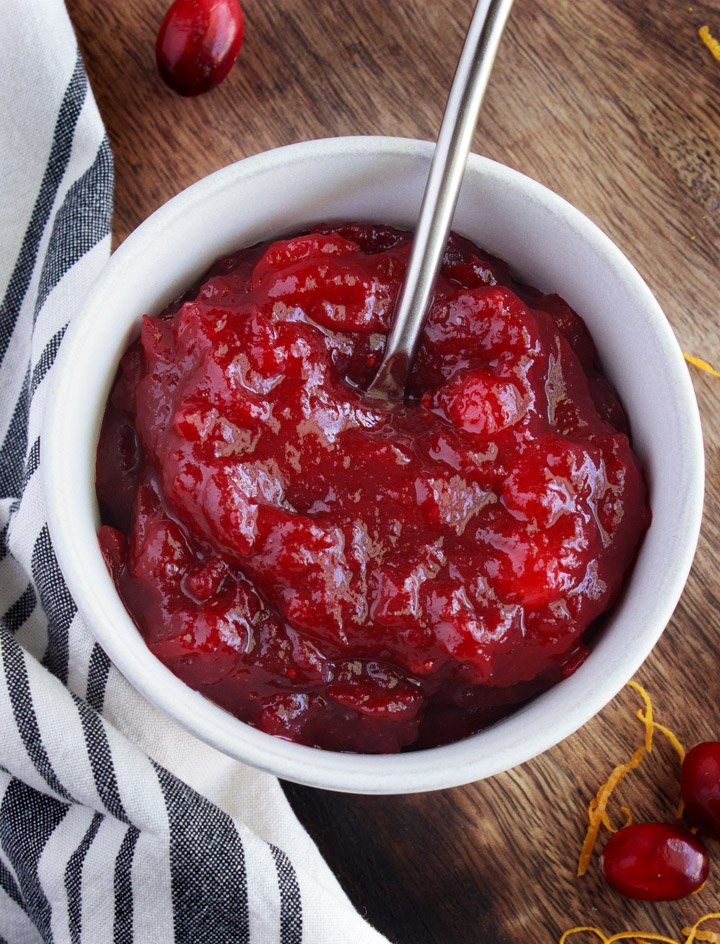
Fresh cranberries from an organic cranberry farm, a little sugar and orange juice come together to make a delicious homemade cranberry sauce for your thanksgiving table.
2. Homemade Apple Sauce (without sugar)
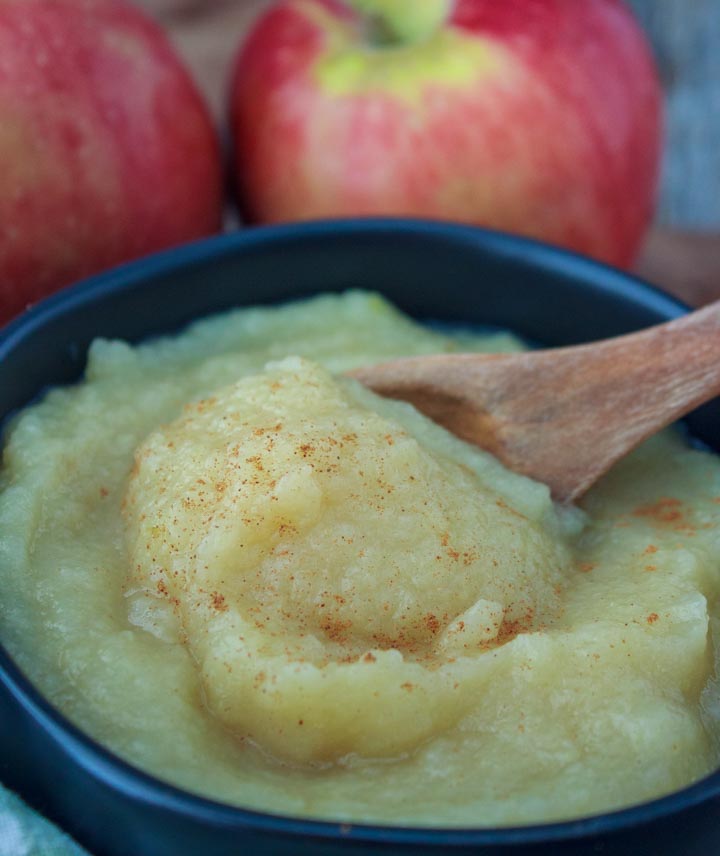
Homemade apple sauce made with organic apples from a local apple orchard. You can make this ahead of time and place it on your thanksgiving table right before dinner.
3. Easy Refrigerator Pickled Beets
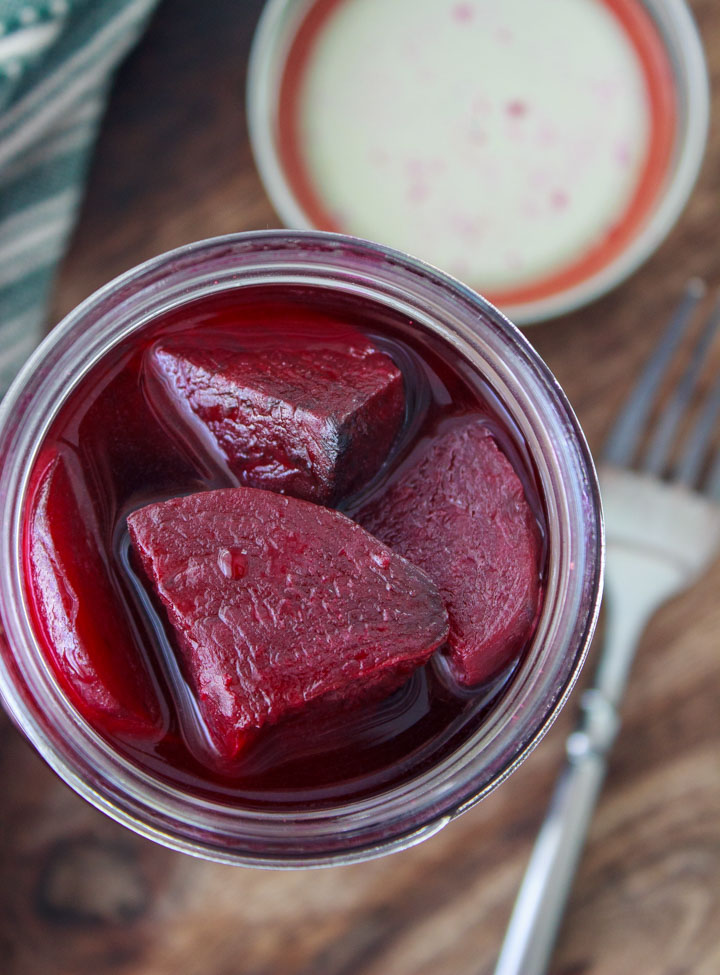
Beets are another delicious Thanksgiving condiment that you can make ahead of time. Growing up my family’s Thanksgiving table always included pickled beets, did yours?
Thanksgiving Desserts
1. Gluten-Free Apple Crisp
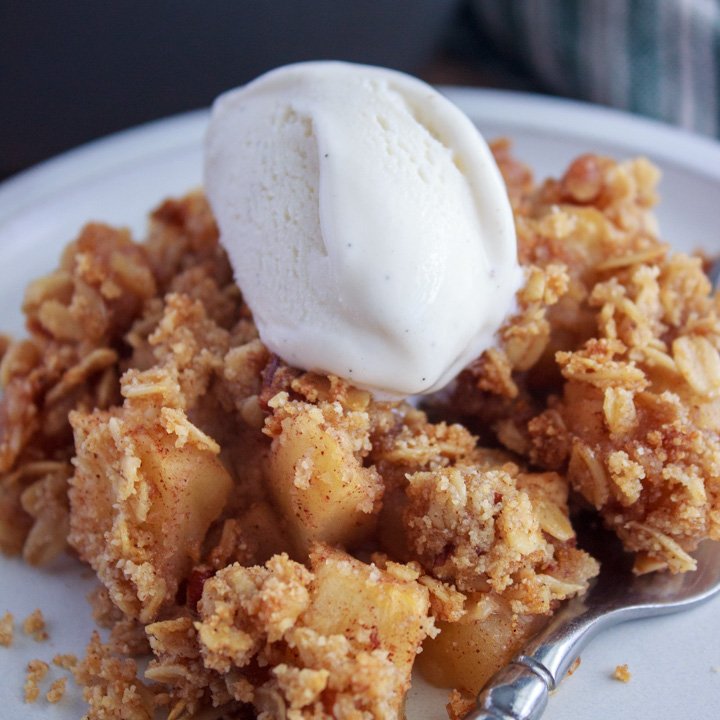
2. Sweet Potato Pie Made with Real Sweet Potatoes
3. Pumpkin Pie with Real Pumpkin
4. Homemade Apple Pie
What’s in Season During November
To help you plan your holiday meal in advance, here is a list of the produce that’s in season during November in the United States.
Note that the exact items will vary based on where in the country you live. For example, November in Florida is a bit different from November in Vermont.
- Apples
- Beets
- Bokchoy
- Broccoli
- Cabbage
- Carrots
- Cranberries
- Fresh herbs
- Kale
- Onions
- Potatoes
- Radish
- Rutabaga
- Spinach
- Sweet potatoes
- Turnips
- Winter squash
Final Thoughts
Will you be having a farm-to-table Thanksgiving with your family or friends? I’d love to hear about it, please post a comment below.
For more farm-to-table meal planning, check out my summer farm to table menu ideas and fall farm-to-table recipes.

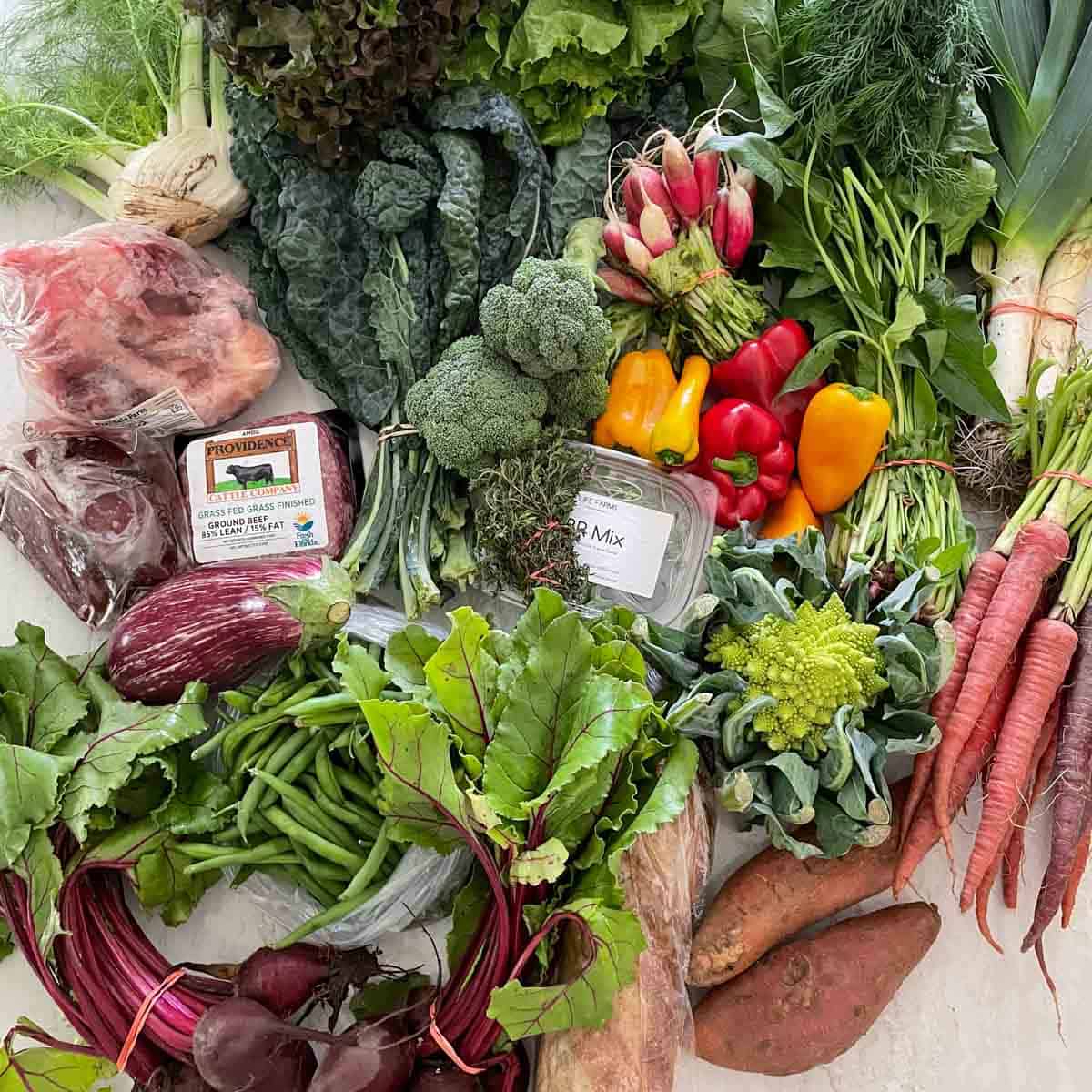




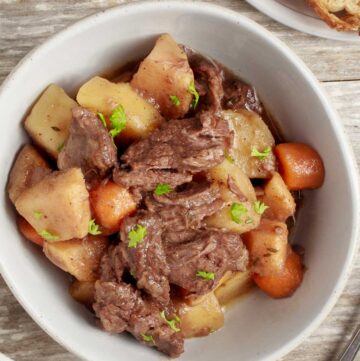

Leave a Reply